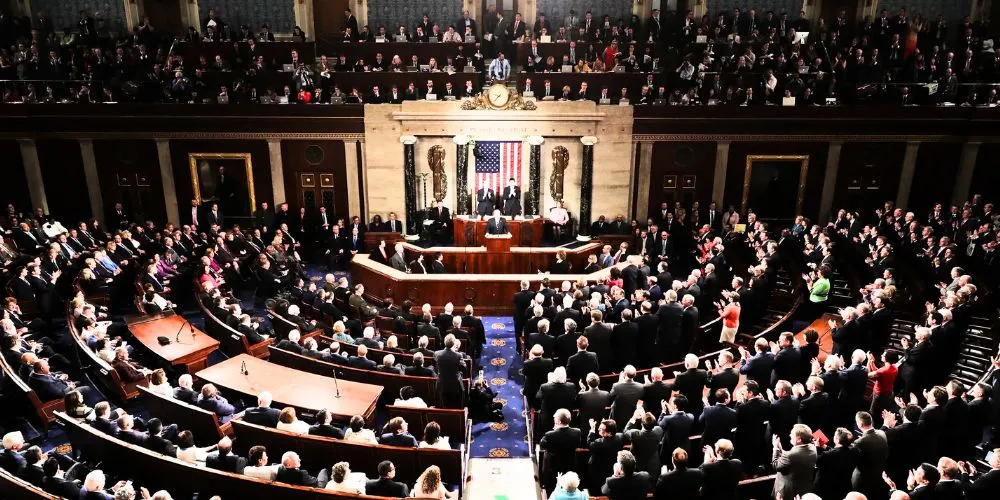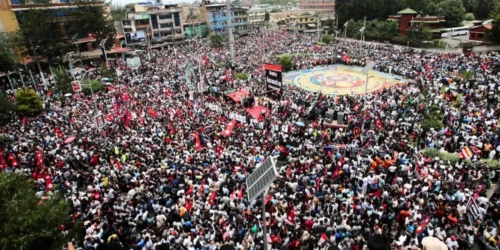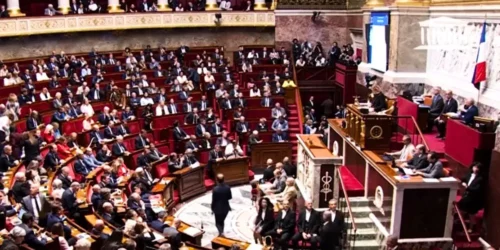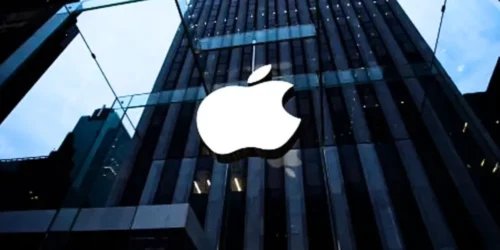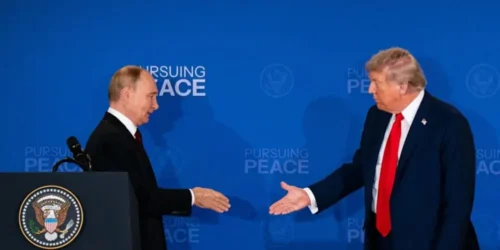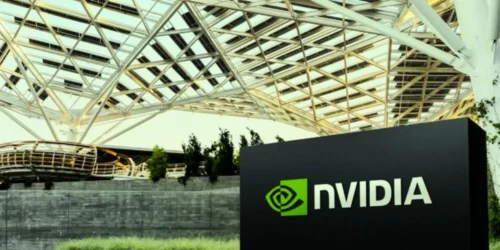We rarely think about it when we’re doing 70 miles per hour, music playing, coffee in the cupholder. The road unfurls before us, a predictable ribbon of gray, a mundane miracle we take for granted. We see it as simple infrastructure, a public utility as unremarkable as a power line or a sewer pipe. We see a road. But we are not just looking at a road. We are looking at a monument.
We are looking at the physical embodiment of a government policy, one of the most ambitious, transformative, and double-edged pieces of legislation ever conceived. We are looking at a testament to a nation’s soaring self-confidence and its staggering blind spots. We are looking at a concrete leviathan that reshaped a continent, built a new way of life, and simultaneously sowed the seeds of social and environmental crises that we are still grappling with today.
This is a case study of what government policy truly is. It is not the dry, legalistic text of a bill debated in a stuffy legislative chamber. It is a force of nature. It is an act of creation, a tool that can redraw maps, move populations, and alter the very texture of human existence. But like any tool of immense power, its consequences—both intended and unforeseen—ripple outward for generations, creating a complex, often tragic, legacy.
Our subject is the Federal-Aid Highway Act of 1956, the bill that created the U.S. Interstate Highway System. We will trace this policy from its conception in the crucible of war and Cold War paranoia, through its heroic age of construction, and into its dark, unintended consequences. This is the story of how a nation, in pursuit of unity and security, built a system that would both connect and divide it in ways its creators never could have imagined. It is a profound, cautionary tale about the immense, world-shaping power of a government’s promise.
The Dream – Forging a National Artery
To understand the revolutionary impact of the Interstate Highway System, one must first picture the America that existed before it. It was a vast, disconnected nation, bound together by a decaying and chaotic patchwork of roads.
Before the 1950s, a cross-country drive was not a vacation; it was an expedition. The road network was a confusing mess of state highways, county roads, and local streets. A traveler journeying from New York to San Francisco would navigate a bewildering array of routes with inconsistent names, lane widths, and speed limits. The roads were often two-lane “death traps,” clogged with local traffic, winding through the center of every small town, and punctuated by countless traffic lights and stop signs. Pavement could abruptly end, giving way to gravel or dirt. A journey that takes four days today could easily take four weeks.
The dream of a unified, transcontinental road system was not new. Private visionaries and early automobile enthusiasts had been pushing the idea for decades. But the project was too vast, too expensive for any state or private consortium to undertake. It required the full weight and resources of the federal government. And to unlock that power, it needed a catalyst more potent than mere convenience or commerce. It needed the galvanizing power of fear.
That catalyst arrived in the form of two formative experiences in the mind of one man: Dwight D. Eisenhower.
The first experience came in 1919. A young Lieutenant Colonel Eisenhower participated in the U.S. Army’s first transcontinental motor convoy. The mission was to test the military’s mobility. It was a disaster. The convoy of 81 vehicles crawled across the country at an average speed of five miles per hour. Bridges collapsed, vehicles broke down, and the whole procession became bogged down in mud and sand. The journey took 62 agonizing days. The experience seared into Eisenhower’s mind the profound vulnerability of a nation without a modern road network.
The second experience came a quarter of a century later. As the Supreme Commander of the Allied Expeditionary Force in World War II, General Eisenhower witnessed firsthand the strategic power of Germany’s Autobahn system. He marveled at how Hitler’s network of high-speed, limited-access highways allowed the German army to move troops and supplies with breathtaking speed and efficiency. It was a weapon of war, an instrument of national power.
When Eisenhower became president in 1953, these two experiences coalesced with the terrifying new reality of the Cold War. The United States now faced the existential threat of a nuclear attack from the Soviet Union. In this new, terrifying context, the idea of a national highway system was no longer just about convenience; it was about survival.
The New Roads
Eisenhower and the proponents of the highway system framed it as a national security imperative. The new roads would be designed to:
- Facilitate Urban Evacuation: In the event of a nuclear attack, the highways would provide a rapid means of evacuating major cities.
- Enable Military Mobility: The system would allow for the swift movement of troops, tanks, and supplies to defend against a potential ground invasion.
- Support Industrial Logistics: The highways would connect the nation’s industrial centers, ensuring that factories could continue to produce war materiel even under duress. The official name of the project tells the whole story: The “National System of Interstate and Defense Highways.”
The Golden Opportunities
This national security argument was the political masterstroke that unlocked the project. It created a powerful, bipartisan consensus. But beneath this patriotic banner, a formidable coalition of economic interests gathered, each seeing a golden opportunity.
- The Auto Industry: The “Big Three” automakers in Detroit saw a future where every American family would need a car (or two) to navigate this new landscape.
- The Oil Companies: More cars driving more miles meant a guaranteed, ever-growing demand for gasoline.
- The Construction Industry and Unions: The prospect of the largest public works project in history promised decades of steady, well-paying work for construction companies, unions, and the manufacturers of steel, concrete, and asphalt.
- State Governments: The financial arrangement was almost too good to be true. The federal government would pay 90% of the cost of construction, with the states only having to put up a 10% match.
It was a perfect political storm. The interests of national security hawks, big business, organized labor, and state governments all aligned. On June 29, 1956, President Eisenhower signed the Federal-Aid Highway Act into law. It authorized the construction of 41,000 miles of highway, at a projected cost of $25 billion over 10 years (a figure that would prove to be a wild underestimate).
The dream was audacious and magnificent. It was a vision of a unified, modern America, a nation bound together by ribbons of concrete. In this country, commerce could flow freely, where families could explore its vast beauty, and where its people would be safe from the existential threats of a dangerous new world. It was a policy born of confidence, ambition, and a uniquely American belief in the power of engineering to solve human problems.
The Great Pour – A Feat of Engineering and National Will
The signing of the 1956 Act unleashed a wave of construction activity unprecedented in human history. It was a project that dwarfed the Panama Canal, the Hoover Dam, and the Pyramids of Giza. It was a decades-long mobilization of steel, concrete, and raw human labor, a great continental pour that would physically and economically remake the nation.
The Logic of the Line
The engineers who designed the Interstate System were guided by a cold, beautiful, and ruthless logic. Their primary directive was to move the maximum number of vehicles from Point A to Point B at the highest possible speed with the greatest possible safety. Every aspect of the design flowed from this principle.
- Limited Access: This was the core innovation. Unlike traditional highways, the Interstates would have no cross-traffic, no stoplights, and no intersections. A system of on-ramps and off-ramps would control entry and exit.
- Gentle Curves and Grades: The roads were designed with wide, sweeping curves and gentle grades to allow cars and trucks to maintain high speeds safely.
- Standardized Design: Every element was standardized, from the width of the lanes (12 feet) and the height of the overpasses (a minimum of 14 feet, supposedly to allow for the movement of military missile carriers) to the iconic red, white, and blue shield that marked every route.
Surveyors and engineers fanned out across the country, plotting the paths of these new superhighways. They used aerial photography and complex calculations to find the straightest, flattest, and most efficient routes. They were masters of a new kind of geometry, the geometry of speed.
The Scale of the Effort
The numbers behind the construction are staggering. Over its lifetime, the project would consume:
- Billions of tons of concrete, enough to build a wall nine feet thick and fifty feet high around the entire globe.
- Hundreds of millions of pounds of dynamite to blast through mountains.
- Vast forests of steel for bridges and overpasses.
It was a project that required legions of workers: roughnecks operating massive earth-moving equipment, steelworkers perched precariously on high bridge beams, and armies of laborers pouring and smoothing endless miles of concrete under a hot sun. The construction of the Interstate System was a testament to the nation’s industrial might and its capacity for monumental, coordinated effort.
The Economic Transformation
The immediate economic impact was explosive, just as the bill’s proponents had promised.
- The Triumph of the Truck: The new highways were a death blow to the nation’s railroads as the primary movers of freight. Trucks could now carry goods from a factory door directly to a store’s loading dock, faster and more flexibly than ever before. The trucking industry boomed, and the iconic image of the long-haul trucker became a part of American folklore.
- The Roadside Revolution: The highways bypassed the old downtowns, creating a completely new commercial landscape along their exits. This gave birth to a new generation of American businesses designed for the traveler in a hurry. The standardized, reliable motel chain, pioneered by Holiday Inn, replaced the old, unpredictable tourist courts. The fast-food restaurant, perfected by McDonald’s, offered a quick, cheap, and consistent meal anywhere in the country. The branded gas station became an essential oasis on the long journey.
- The Rise of the American Road Trip: For the first time, middle-class families could pack up the station wagon and explore the country with a new sense of freedom and possibility. The highways made the national parks of the West, the beaches of Florida, and the historic sites of the East accessible to millions. The family road trip became a cherished American ritual, a way of experiencing the nation’s vastness and diversity firsthand.
In its first two decades, the Interstate Highway System seemed to be an unalloyed triumph. It was a promise delivered, a vision realized. It had bound the nation together, supercharged its economy, and created a new culture of mobility and freedom. It was a monument to what a government, working with purpose and ambition, could achieve. But as the concrete settled, a series of deep, structural cracks began to appear in the American landscape, cracks that the engineers, in their focus on the logic of the line, had either ignored or actively created.
The Unraveling – The Agony of Unintended Consequences
The fatal flaw in the grand design of the Interstate Highway System was a simple but catastrophic assumption. The planners saw their task as connecting cities. They gave little thought to what would happen when the highways went through cities. In their quest to move cars efficiently, they unleashed a series of social and economic forces that would gut the American city and entrench patterns of segregation and sprawl for generations.
The Concrete Gash: Dividing the Urban Core
When highway engineers looked at a map of a dense, complex city, they did not see vibrant neighborhoods, historic architecture, or intricate social fabrics. They saw obstacles. They saw a messy, inefficient grid that needed to be rationalized. Their solution, repeated in city after city, was to plow the highways directly through the urban core.
They chose the “path of least resistance,” which in practice often meant the path through the poorest and most politically powerless neighborhoods. They built massive, elevated expressways and deep, concrete canyons that tore through the heart of communities. A street that had once been a bustling artery of local life, lined with shops and homes, became a dead-end, shadowed by a roaring, multi-lane freeway. These highways became the new dividing lines in the American city, physical and psychological barriers that separated one neighborhood from another.
The Great Exodus: The Birth of the Suburb and the Death of Downtown
The Interstate was not the sole cause of suburbanization, but it was the massive, federally funded accelerant that turned a trend into a tidal wave. The highways made it possible for people to live miles away from their downtown jobs and still commute in a reasonable amount of time.
This was coupled with another powerful government policy: the federally insured home mortgage. These programs, administered by the Federal Housing Administration (FHA), made it incredibly easy for middle-class families to get cheap, long-term loans to buy new homes. The catch? The FHA overwhelmingly favored loans for new construction in the suburbs over loans for renovating older homes in the city.
The result was a powerful, one-way incentive system. A white, middle-class family could sell their city home, get a cheap government-backed loan, and buy a brand-new, larger house in a leafy suburb with good schools, all connected to their downtown office by a gleaming new freeway. The “American Dream” was redefined as a house in the suburbs with a two-car garage.
The consequences for the city were devastating. As the middle class (and its tax base) fled, downtowns began to die. The grand department stores, the movie palaces, and the locally owned shops could no longer compete with the new suburban shopping malls that sprouted up at every highway interchange. Businesses followed their customers and employees out to the suburbs, leaving behind vacant storefronts and office buildings. The American downtown, once the vibrant, chaotic, and diverse heart of civic life, became a hollowed-out shell, a place people drove through, but no longer a place they drove to.
Infrastructure as a Weapon: Race and the Highway
The story of the highways’ path through the cities has an even darker, more deliberate chapter. In many cases, the routing of the Interstates was not just an act of engineering indifference; it was a conscious tool of racial segregation and “urban renewal.”
In the post-war era, many thriving, cohesive Black neighborhoods were viewed by white city planners as “blighted” or “slums.” The new federal highway program provided them with a powerful tool and a massive pot of money to eliminate these neighborhoods. Time and again, planners across the country deliberately routed interstates directly through the heart of African American communities.
- In Miami, Interstate 95 was plowed through the center of Overtown, a vibrant Black commercial and residential district known as the “Harlem of the South.”
- In St. Paul, Minnesota, the construction of Interstate 94 destroyed the Rondo neighborhood, displacing thousands of Black families and destroying hundreds of homes and businesses.
- In countless other cities, the story was the same. The highway became a weapon, used to clear land, displace populations, and create a stark, physical barrier between white and Black neighborhoods.
This was a catastrophic and intentional consequence of the policy. The government, in its quest to build a system of national unity, used that very system to reinforce and deepen the nation’s racial divisions.
The Environmental Toll: A Culture Locked in Carbon
The final unintended consequence was environmental. The Interstate System did not just accommodate the American love affair with the automobile; it enshrined it as the only viable mode of transportation for most of the country. It locked the nation into a pattern of car-dependent sprawl that has had massive, long-term environmental costs.
- Air Pollution and Carbon Emissions: The system spurred a massive increase in vehicle miles traveled, leading to decades of smog in major cities and entrenching the transportation sector as a primary source of greenhouse gas emissions.
- Destruction of Nature: Highways sliced through forests, wetlands, and farmland, fragmenting ecosystems and destroying wildlife habitats.
- The Neglect of Alternatives: The colossal investment in highways came at the expense of other modes of transportation. While America was pouring billions into roads, its passenger rail system withered, and public transit in most cities was starved of funds.
The dream of a clean, efficient system of mobility had created a reality of traffic jams, air pollution, and a deep, structural dependence on the very fossil fuels that would create the next great crisis of the 21st century.
The Concrete Legacy – Living in the World the Highway Built
The great pour is over. The Interstate Highway System is largely complete, a mature and aging monument to the ambitions of a bygone era. But we are all living within the world it created. Its legacy is written in the very landscape of our lives.
The patterns of our daily existence—where we live, how we work, where we shop, how we spend our leisure time—are all profoundly shaped by this single, half-century-old government policy. The suburban cul-de-sac, the big-box store, the hour-long commute, the decline of local main streets, and the stark geographic divisions between our communities are all part of the highway’s concrete legacy. It is the invisible architecture that structures our lives.
In recent decades, a growing awareness of this legacy has spurred a new generation of policymakers and urban planners to try to undo some of the damage. A powerful “urban highway removal” movement has gained traction.
- In Boston, the “Big Dig” famously buried the elevated Central Artery that had gashed the city in two, replacing it with a tunnel and creating a beautiful new urban greenway on top.
- In Rochester, New York, a portion of the Inner Loop freeway that had strangled the downtown core was filled in, replaced by new housing, businesses, and walkable streets.
- Cities from Portland to Milwaukee have successfully removed or redesigned urban freeways, stitching their neighborhoods back together and breathing new life into their city centers.
These projects are difficult, expensive, and politically contentious. They are a testament to the concept of path dependency—the idea that once a massive infrastructure choice is made, it creates a “path” that is incredibly hard to deviate from. It is far more difficult and costly to tear down a highway than it was to build it in the first place.
The Enduring Lessons of the Leviathan
The story of the Interstate Highway System is more than just a history of a public works project. It is a profound and enduring case study on the nature of government policy itself. It offers several critical lessons for any leader or citizen who seeks to shape the future.
- The Law of Unintended Consequences is Unbreakable: No policymaker, no matter how brilliant, can foresee all the second- and third-order effects of a major intervention. The creators of the Interstate System intended to build a network for national defense and economic efficiency. They did not intend to destroy the American city or create a car-dependent culture, but they did. This calls for a deep sense of humility in the face of complex systems.
- Policy is Never Neutral: Every policy, no matter how technical it may seem, is embedded with a set of values and assumptions. The highway policy was not just about concrete and steel; it was shaped by Cold War ideology, a cultural bias toward the automobile over public transit, and, too often, the ugly realities of racial prejudice. We must always ask: Whose values are being prioritized? Who benefits and who pays the price?
- The Danger of a Single-Minded Focus: The highway engineers were brilliant at solving the problem they were given: move cars quickly. But they were blind to the other, equally important problems of community, equity, and environmental health. A siloed, single-minded approach to policymaking will almost always create disastrous side effects. True wisdom lies in seeing the system as a whole.
- We Can Change Course: Policies are not fate. The new movements to redesign our cities and invest in alternative forms of transportation show that the decisions of the past do not permanently trap us. We can learn from our mistakes, and we can make new choices that reflect new values.
Conclusion: The Architect’s Responsibility
The Interstate Highway System remains a magnificent and monstrous achievement, a perfect symbol of the American paradox. It is a monument to our capacity for grand ambition, collective action, and breathtaking engineering. It is also a scar on our landscape, a lasting reminder of our historical blindness to the intricate social fabrics of our cities and the long-term health of our planet.
Government policy is the most powerful tool human beings have ever invented for shaping their collective destiny. It can be a tool of liberation and prosperity, a force that builds a more just and unified society. Or it can be a blunt instrument, a weapon that, even with the best of intentions, inflicts deep and lasting wounds.
The concrete leviathan that crisscrosses our continent is not just a lesson in the history of transportation. It is a lesson in the awesome responsibility that comes with wielding the power of the state. It teaches us that the architects of public policy are not merely drafting laws; they are designing the world our children will inherit. The great challenge of our time is to learn from the ambition and the agony of their efforts, and to wield that architectural power with more foresight, more wisdom, and more humanity. The roads of the future are yet to be built.

